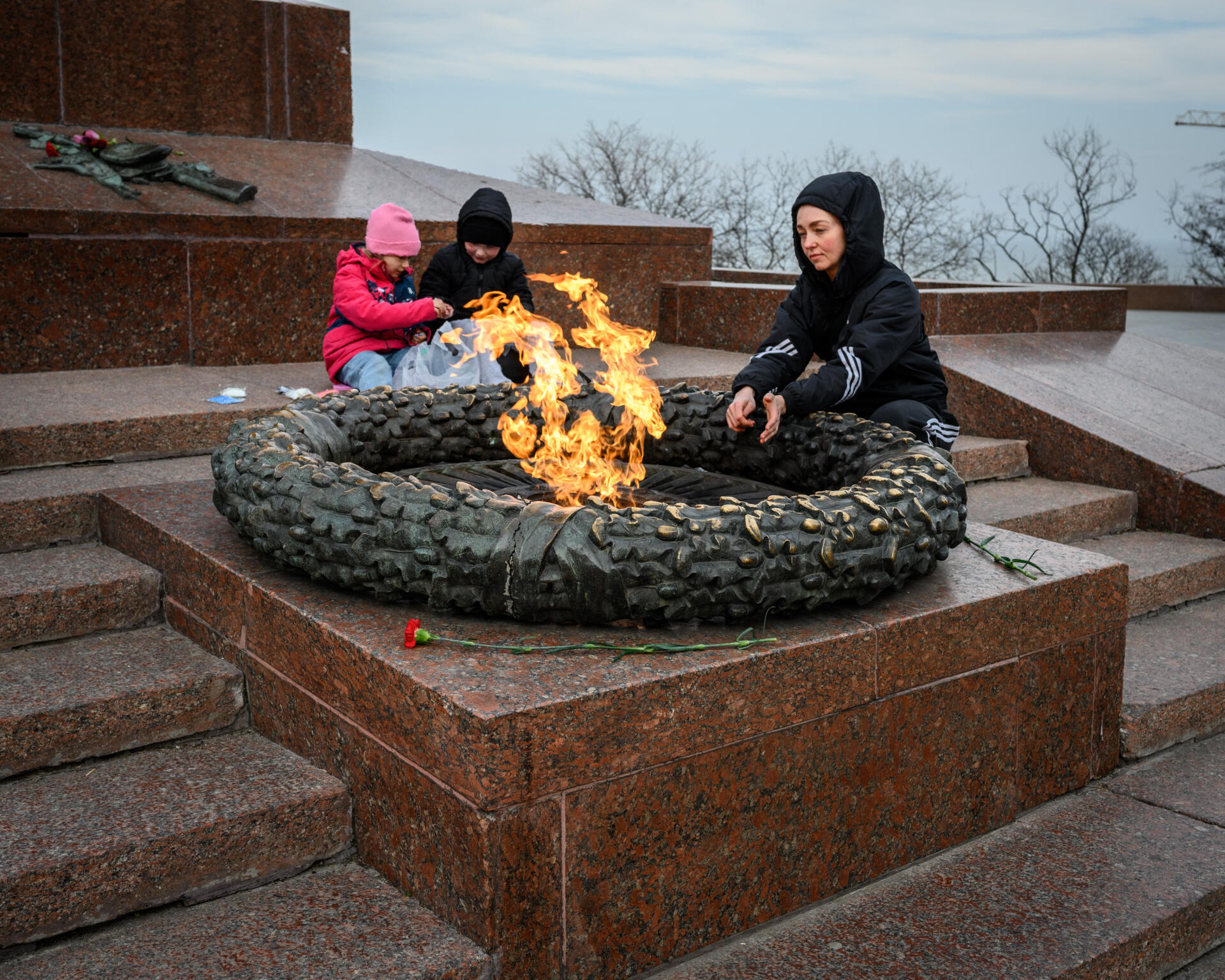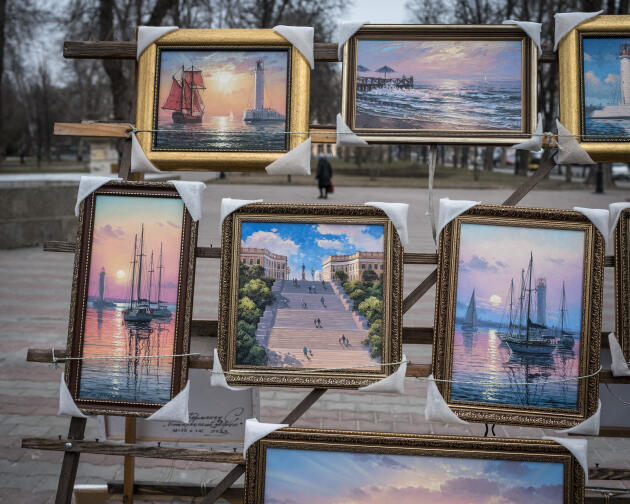


War in Ukraine: From Mariupol to Odesa, four naval cadets weather the storm
Long ReadFour young women from Mariupol dreamed of a career in the navy. Burdened by painful memories of the siege in the spring of 2022, they have taken refuge at the prestigious Odesa Maritime Academy, where they are waiting impatiently.
Covered in numbers and brackets, the blackboards at Odesa's National Maritime Academy conjure up distant horizons. "Let's take the case of a cargo ship sailing from Odesa to Naples," began the law professor in the maritime and river management section. "Knowing that the distance between the ports is 1,700 nautical miles and that the ship's speed is 16.5 knots, calculate the journey time if the additional travel time is 0.8 days." At the beginning of spring, another alert disturbed the silence of the classroom. Exercise canceled. Solving the equation of the open sea had to wait. The students of the prestigious naval school, whose reputation has spanned the globe for 80 years, packed up their pens to follow their class leader, recognizable by the yellow chevrons on her uniform.
Among them was Anna R., an 18-year-old student with blond braids, wearing a navy collar and striped shirt. She knows all about shelters and missiles: She's from Mariupol. In recent weeks, she has again heard drones pierce buildings, when Ukrainian anti-aircraft defenses failed to protect Odesa from Russian strikes, often launched from the Black Sea. "In February 2022, the port was expecting a land attack," recalled Dmytro Pletentchouk, spokesman for the Ukrainian naval forces, whom we met in a secluded park. "But the town of Mykolaiv stood firm and prevented the Russians from entering Odesa. Here, the war is now being fought from the sea." On April 10, four more people died, including a 10-year-old girl. A few days earlier, the city had been plunged into darkness. And Volodymyr Zelensky, who met the Greek prime minister at the port on March 6, himself saw a missile crash 500 meters away.
As in 2022, Odesa residents took refuge in the catacombs, which are no longer frequented by tourists. Foghorns and ship's whistles have resurfaced in the harbor of the country's largest seaport since Russia lifted its six-month blockade in fall 2022, but not a single cruise ship has docked in Odesa for two years. For the rare strollers, photos against the backdrop of the Black Sea and selfies in front of the Vorontsov lighthouse are discouraged. The SBU, the Ukrainian secret service, monitors social media, and neither Instagram nor TikTok should give clues to the enemy.


In the windows of souvenir stores, models of cargo ships and sailing boats gather dust, waiting for who knows who, who knows what. In front of the cathedral, destroyed last summer by a strike, amateur paintings of the city languish, kitschy and garish. The Fine Arts Museum, also damaged, is protected by plywood. And the famous International Film Festival, which once welcomed Catherine Deneuve, one of the few French actresses to publicly defend Ukraine, and to which stars from all over the world flocked every July, now takes place in Kyiv and Chernivtsi, in western Ukraine.
You have 84.91% of this article left to read. The rest is for subscribers only.
